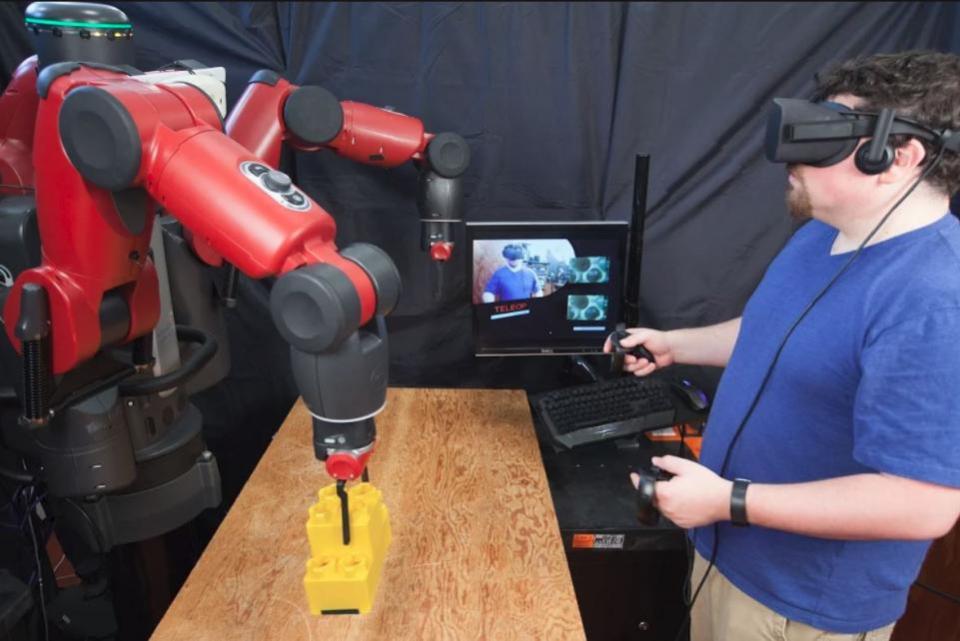MIT Develops Virtual Reality Control System for Robots
Artificial intelligence researchers at MIT have developed a virtual reality system for robots that allows humans to control them remotely.
The system works by using hand controllers and multiple sensor displays to enable users to teleoperate a robot using an Oculus Rift headset.
A paper detailing the system was presented this week at the IEEE/RSJ International Conference on Intelligent Robots and Systems (IROS) in Vancouver, British Columbia.
“A system like this could eventually help humans supervise robots from a distance,” says MIT's Computer Science and Artificial Intelligence Lab (CSAIL) postdoctoral associate Jeffrey Lipton, lead author of the paper.
“By teleoperating robots from home, blue-collar workers would be able to tele-commute and benefit from the IT revolution just as white-collar workers do now.”
A spokesperson for CSAIL tells Newsweek that the system could also help employ jobless video gamers by “game-ifying” manufacturing task.

Earlier this year, researchers at Princeton University published a paper examining the theory that improved video game technology has played a role in reducing the labor supply of younger men.
The researchers found that over the last 15 years, men aged 21 to 30 experienced a far greater decline in work hours compared to older men or women.
MIT’s system uses off-the-shelf gaming and VR technology to place users in a virtual cockpit, making it more flexible and user-friendly compared to previous systems. Researchers found that users with gaming experience had much more ease with the system than those without.
The researchers also demonstrated that the VR system could pilot robots from hundreds of miles away.
Oussama Khatib, a computer science professor at Stanford University who was not involved in the the paper, said: “This contribution represents a major milestone in the effort to connect the user with the robot’s space in an intuitive, natural and effective manner.”
The MIT researchers hope to now focus on making the system more scalable and more compatible with other virtual reality and robotic technology.
Related Articles

